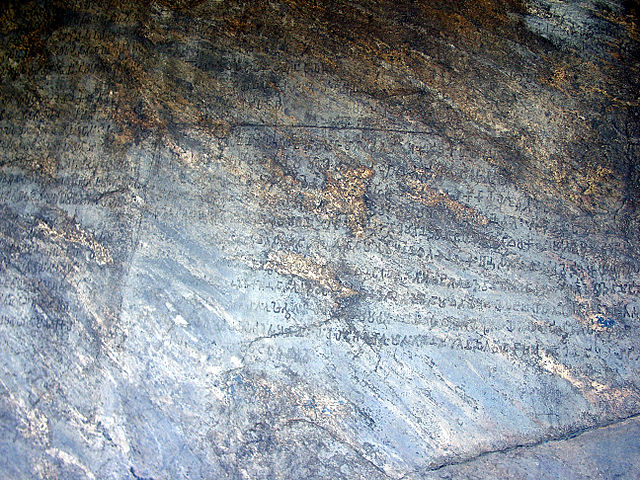
Rock Edict of Ashoka
c. 260 BC
Dhauli, near Bhubaneshvar

|
Rock Edict of Ashokac. 260 BC
|
Shown here is part of the Dhauli inscription, which is located on the north rock face (under a small overhang) below the elephant sculpture. Ashoka's rock edicts are imperial decrees; they extol the virtues of dharma (the Buddhist law), and exhort his subjects and officials to behave in accordance with its precepts. They were written in Prakrit, the vernacular language, using Brahmi script, so that all could read them (that is, of course, all who could read; being royal edicts, they would also have been read aloud to assemblies of the people.)
Curiously, the Buddhist faith is not explicitly mentioned by name in the inscriptions; no doubt this is a concession to the sensibilities of Ashoka's Hindu subjects. In a similar vein, Edict XIII - which elaborates the many killings and injuries that Ashoka's conquest inflicted on this region - was omitted from the Dhauli monument.
Ashoka's reputation for benevolence and tolerance is justly built on these inscriptions; there is nothing like them in the ancient world. It has been noted, perhaps somewhat cynically, that Ashoka only repented after he had built his empire. He never renounced his position as absolute ruler, nor did he make reparation to the conquered. However, in the context of his times, and indeed of almost any time in history, Ashoka's dedication to compassionate governance - including, most especially, his public and written apology for past misdeeds - seems as startling, even revolutionary, as it is worthy of praise.

|

|